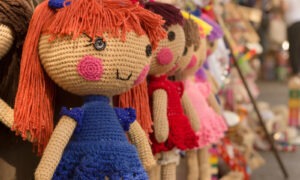At first glance there seems nothing either suspicious or threatening about objects made from wood. These objects include things as small at toothpicks to as large as totem poles. Wood is simply the product used to develop a consumer product or good. Yet for those who fear wooden objects the phobia is time consuming and debilitating. The fear is known as Xylophobia.
Wood is used to create heirloom quality home furnishings, chests and ornate carvings. The beauty of the end product can often stand the test of time and be passed on to one or more generations of family. However, the fear of wooden objects can also create an unusual amount of stress for the one who fears.
What Causes Xylophobia
The trouble with this fear is that there can be multiple causes. Let’s take a look at a few.
Fire hazard – this is a fear that the use of wood increases the potential of fire within a home or personal space.
Life Within – this is a fear that the wood, which was once living, still has some form of life within, and that life might not be thrilled that it was sacrificed for a new and perhaps less noble purpose.
A product of the divine – this is a fear that the wood is a tangible representation of a deity. The fear suggests that the deity can exact vengeance on any who do not do their bidding.
Think what you will of the potential fear triggers, but the truth is fear doesn’t select any form of rational judgment for its existence. The fear can be the result of a personal experience that instilled a sense of fear or can be learned by observing another.
Symptoms of Xylophobia
It probably doesn’t come as a surprise, but in many cases someone who fears wooden objects will not likely have any wooden objects in their home. They may even opt for a brick or cement structure instead of a traditional stick-built home. Headboards may be made of metal and doors made of steel for those who live with this fear.
Other symptoms may also include…
- Air hunger
- Trembling
- Nausea
- A sense of control loss
- A feeling of being spiritually oppressed
- Insomnia
- Elevated heart rate
- Feeling faint
In many cases fear crops up as a result of obsessive compulsive behaviors. When the mind determines to continually entertain the idea that something should be feared the mind ultimately buys into the belief that fear is an acceptable response for all future encounters.
How to Overcome Xylophobia
Fear cannot be addressed in a rational way during those moments when the fear response is irrational. Any intervention must take place when the individual is calm. One key individual that will know how to approach a phobic personality is a qualified therapist. These individuals can blend proven therapies with empathetic dialogue. Yes, therapy can help, but it will require knowledge and even a sense of brain retraining that doesn’t rely exclusively on emotional triggers.
The fear of wooden objects is also referred to as:
- Wooden object fear
- Xylophobia





















